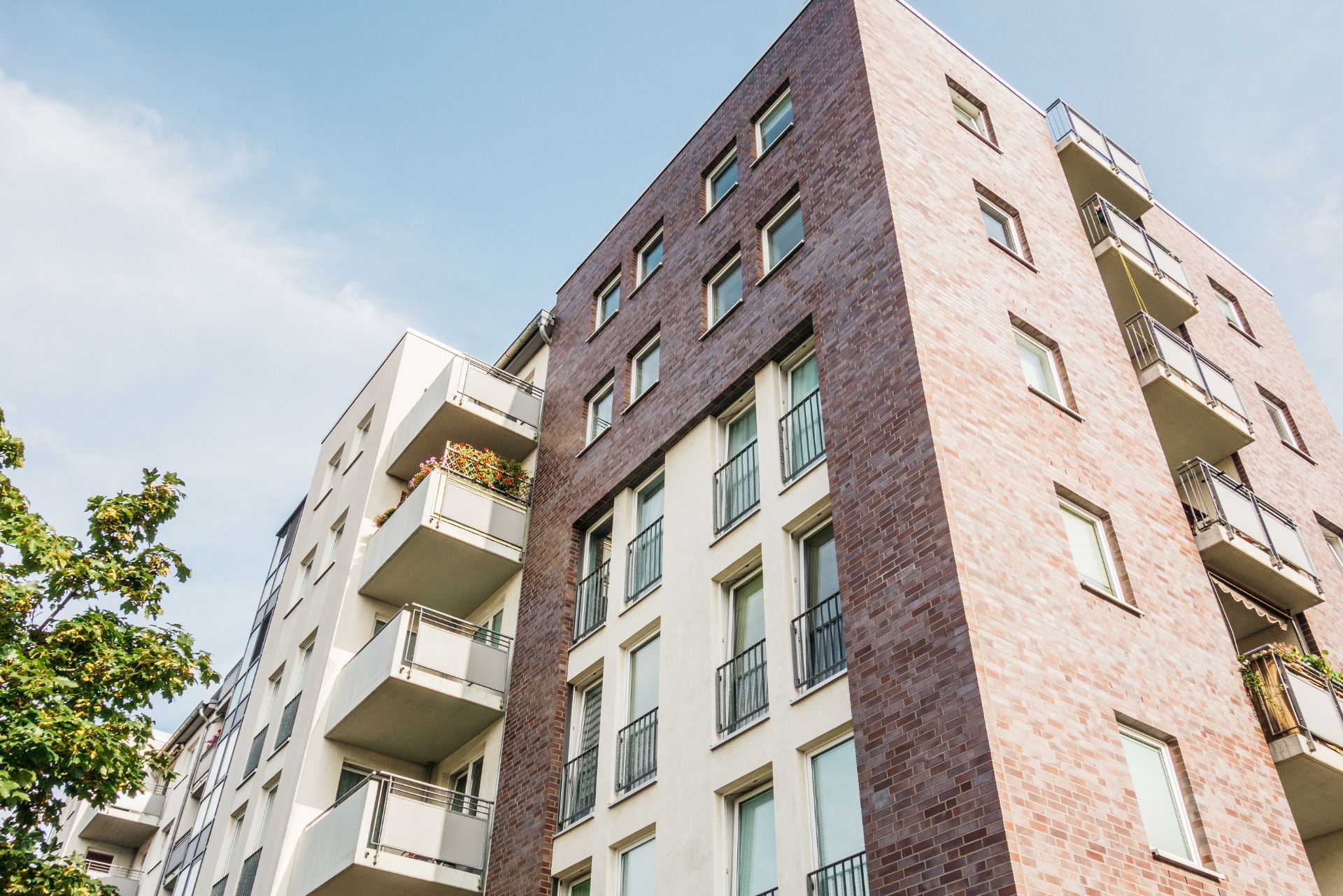Top 3 Recommended Policies

Investing in Class B multifamily apartments in North Carolina has become increasingly complex, especially when it comes to securing the right insurance coverage. With rising property insurance costs and evolving market dynamics, understanding the nuances of insurance for these properties is essential for owners, investors, and developers alike. This comprehensive guide explores the current insurance landscape for Class B multifamily apartments in North Carolina, highlighting key challenges, market trends, and strategies to navigate this critical aspect of property management.
As the multifamily housing market in North Carolina experiences significant shifts, including a surge in new construction and changing vacancy rates, insurance considerations have never been more important. For example, property insurance costs have risen 26 percent on average over the past year, putting pressure on operating budgets and deal structures.
Understanding Class B Multifamily Apartments in North Carolina
Class B multifamily apartments typically refer to properties that are older than Class A assets but still maintain a good level of upkeep and amenities. These properties often attract middle-income renters and represent a significant portion of the rental housing stock in North Carolina’s urban and suburban markets. Unlike Class A apartments, which are newer and command premium rents, Class B properties face unique challenges such as higher maintenance costs and more sensitive rent dynamics. Additionally, these apartments often feature a mix of unit sizes and layouts, catering to a diverse demographic that includes young professionals, families, and retirees seeking affordable yet comfortable living options.
In North Carolina, the multifamily sector has seen a remarkable construction boom, with over 7,000 multifamily permits issued in the second quarter of 2024 alone, accounting for more than a quarter of all housing units permitted according to Sherbert Group. This surge has contributed to an oversupply in key markets such as Charlotte and Raleigh, which directly impacts insurance underwriting and risk assessments. The influx of new developments has also intensified competition among landlords, leading to potential rent reductions and increased incentives for tenants, such as waived application fees or free parking. As a result, Class B properties may need to adapt their marketing strategies to highlight their unique features and community amenities, such as fitness centers, pools, and proximity to public transportation, in order to attract and retain tenants.
Moreover, the demographic shifts in North Carolina, driven by an influx of tech and finance professionals, have influenced the demand for Class B apartments. Many of these renters are looking for a balance between affordability and convenience, often prioritizing locations that offer easy access to urban job centers while still being budget-friendly. This trend has led to a renewed interest in older properties that can be upgraded with modern finishes and energy-efficient appliances, making them more appealing to environmentally conscious renters. Landlords of Class B properties are increasingly investing in renovations that enhance the living experience without drastically increasing rental prices, thereby maintaining their competitive edge in a rapidly evolving market.

Why Property Insurance Costs Are Rising for Class B Apartments
One of the most pressing issues facing owners of Class B multifamily apartments in North Carolina is the steep increase in property insurance premiums. Over the past year, insurance costs have risen by an average of 26%, a trend that is squeezing profit margins and complicating financing options.
Several factors contribute to these rising costs. The insurance industry has been adjusting to increased claims related to natural disasters, inflation in construction costs, and greater risk exposure from aging building materials. For Class B properties, which often require more frequent repairs and updates, insurers perceive a higher risk profile, leading to higher premiums.
Moreover, a recent study revealed that over the past three years, 61% of respondents in the multifamily housing sector had to increase their deductibles to maintain affordability, with property coverage being the most affected line at 84% according to NMHC data. This trend underscores the growing challenge of balancing adequate coverage with cost control.
Impact of Insurance on Operating Expenses
Property insurance has outpaced other operating expenses in multifamily housing over recent years. The 2022 Novogradac survey found an 87.6% increase in property insurance costs over four years, a rate significantly higher than general expense growth according to NC Housing Finance Reports. For Class B apartment owners, this means that insurance is becoming one of the largest and fastest-growing line items in their budgets.
This escalation in insurance costs is not only impacting the bottom line but also influencing strategic decisions regarding property management and maintenance. Owners are increasingly faced with the dilemma of whether to invest in preventative measures to mitigate risks or to cut back on essential services to offset rising premiums. This could lead to a decline in property conditions over time, potentially affecting tenant satisfaction and retention rates. Additionally, as insurance costs continue to rise, property owners may find it challenging to pass these expenses onto tenants without risking higher vacancy rates, thereby creating a precarious balance between profitability and tenant affordability.
Furthermore, the implications of these rising insurance costs extend beyond immediate financial concerns. Investors and lenders are becoming more cautious, scrutinizing the insurance profiles of Class B properties more closely before committing funds. This increased vigilance can lead to more stringent financing terms, which may further complicate the ability of property owners to refinance existing loans or secure capital for renovations. As a result, the multifamily housing market may see a shift in investment strategies, with potential buyers looking more favorably on Class A properties that are perceived as lower risk, thereby exacerbating the challenges faced by Class B apartment owners.
Challenges in Financing and Insurance Underwriting
Rising insurance costs are not the only hurdle. Financing Class B multifamily developments or acquisitions in North Carolina has grown more challenging due to tightening underwriting standards. Lenders are increasingly demanding higher Debt Service Coverage Ratios (DSCR) and more conservative loan-to-value (LTV) ratios to mitigate risk in a softening market environment.
With interest rates remaining elevated, these stricter requirements make it harder to secure favorable financing terms. This is particularly true in markets like Charlotte, where a recent wave of nearly 19,000 new apartments introduced in 2024 has shifted the supply-demand balance according to REBusiness Online. The resulting market saturation has caused rent stagnation and increased vacancy rates, further complicating underwriting assessments.
Insurance underwriters are also adjusting their criteria in response to these market shifts. Properties with higher vacancy rates or those in oversupplied submarkets may face increased scrutiny or premium hikes. This makes it crucial for Class B apartment owners to maintain strong property management practices and demonstrate risk mitigation efforts to insurers.
Vacancy Rates and Market Saturation
Vacancy rates have risen notably, with a 50 basis point increase in the last quarter of the year pushing the overall vacancy to 7.5%, and a 170 basis point rise over the full year as reported by NorthMarq. This trend reflects the impact of new supply on tenant demand, which in turn affects rent growth and property cash flow—key factors in insurance risk evaluations.
Additionally, the demographic shifts in North Carolina are influencing the multifamily market landscape. With a growing population of young professionals and families seeking affordable housing options, the demand for Class B properties remains, albeit under pressure from the influx of new developments. As these demographic trends evolve, property owners must adapt their marketing strategies and tenant engagement efforts to attract and retain residents in a competitive environment. This includes enhancing amenities, improving community engagement, and ensuring that properties remain appealing despite the rising number of options available to potential renters.
Moreover, the economic landscape plays a significant role in shaping the multifamily financing and insurance underwriting environment. Factors such as job growth, wage trends, and overall economic stability can influence investor confidence and lending appetites. In North Carolina, the ongoing development of technology hubs and the expansion of industries such as healthcare and education are expected to bolster job opportunities, potentially stabilizing the rental market in the long term. However, the immediate effects of market saturation and rising costs necessitate a strategic approach for property owners and investors navigating these turbulent waters.
Strategies to Manage Insurance Costs for Class B Apartments
Given the upward pressure on insurance premiums, owners and investors in Class B multifamily apartments must adopt proactive strategies to manage costs without compromising coverage quality. Here are some effective approaches:
1. Increase Deductibles Strategically
As many NMHC respondents have done, increasing deductibles can help reduce premium costs. However, this approach requires careful financial planning to ensure that the property can absorb higher out-of-pocket expenses in the event of a claim. It's essential to conduct a thorough analysis of historical claims data to determine an optimal deductible level that balances potential savings with financial risk. Additionally, owners should consider setting aside a dedicated reserve fund to cover these higher deductibles, which can provide peace of mind and financial stability in the face of unexpected incidents.
2. Invest in Risk Mitigation Measures
Improving property maintenance and safety features can lower the perceived risk to insurers. This includes upgrading fire prevention systems, addressing deferred maintenance promptly, and implementing robust tenant screening processes. Furthermore, investing in security enhancements, such as surveillance cameras and improved lighting in common areas, can deter criminal activity and reduce liability risks. Regular training for staff on emergency response procedures can also enhance safety and potentially lower insurance costs, as insurers often favor properties that demonstrate a commitment to risk management.
3. Shop and Negotiate with Multiple Insurers
Given the competitive nature of the insurance market, it pays to obtain multiple quotes and negotiate terms. Some insurers may offer specialized products tailored to Class B multifamily properties, which can provide better coverage at a more affordable price. Additionally, building strong relationships with insurance agents can lead to more personalized service and better insights into policy options. Owners should also consider bundling insurance policies, such as property and liability coverage, to take advantage of potential discounts and streamline their insurance management process.
4. Leverage Technology and Data
Using data analytics to monitor property performance and risk factors can provide valuable insights that support insurance negotiations. Demonstrating a strong risk management profile can lead to more favorable underwriting outcomes. Moreover, implementing property management software can help track maintenance requests and tenant behavior, allowing owners to identify trends that may impact risk. By proactively addressing issues before they escalate, property owners can not only enhance tenant satisfaction but also present a compelling case to insurers for lower premiums based on their demonstrated commitment to maintaining a safe and well-managed environment.

The Future of Class B Multifamily Insurance in North Carolina
Looking ahead, the insurance landscape for Class B multifamily apartments in North Carolina will likely continue to evolve in response to market conditions. The ongoing construction boom and resulting oversupply in key metros like Charlotte and Raleigh are expected to keep upward pressure on vacancy rates and slow rent growth, creating a challenging environment for both property owners and insurers.
At the same time, insurers may further tighten underwriting standards or adjust pricing models to reflect these risks. Owners who stay informed about market trends and maintain strong risk management practices will be better positioned to navigate these changes.
Ultimately, understanding the interplay between insurance costs, financing challenges, and market dynamics is crucial for anyone involved in Class B multifamily properties in North Carolina. By staying proactive and informed, stakeholders can protect their investments and capitalize on opportunities in this dynamic sector.
In addition to the challenges posed by market fluctuations, property owners must also consider the impact of natural disasters and climate change on their insurance policies. North Carolina is no stranger to severe weather events, including hurricanes and flooding, which can lead to increased claims and higher premiums. Insurers are likely to factor these risks into their pricing models, making it essential for property owners to invest in robust risk mitigation strategies, such as flood defenses and emergency preparedness plans. These proactive measures not only safeguard properties but can also positively influence insurance premiums, creating a more favorable financial outlook for owners.
Furthermore, the rise of technology in the insurance sector presents both opportunities and challenges for Class B multifamily property owners. Insurtech innovations, such as data analytics and machine learning, are transforming how insurers assess risk and set premiums. By leveraging these technologies, property owners can gain valuable insights into their risk profiles and make informed decisions regarding coverage options. Engaging with insurtech solutions may also streamline the claims process, allowing for quicker resolutions and minimizing financial disruptions. As the industry adapts to these technological advancements, staying abreast of these changes will be vital for owners seeking to optimize their insurance strategies.
For more detailed insights on financing challenges and market trends,
Sherbert Group’s analysis offers an in-depth look at the current environment shaping multifamily housing development in the state.
Contact Us


